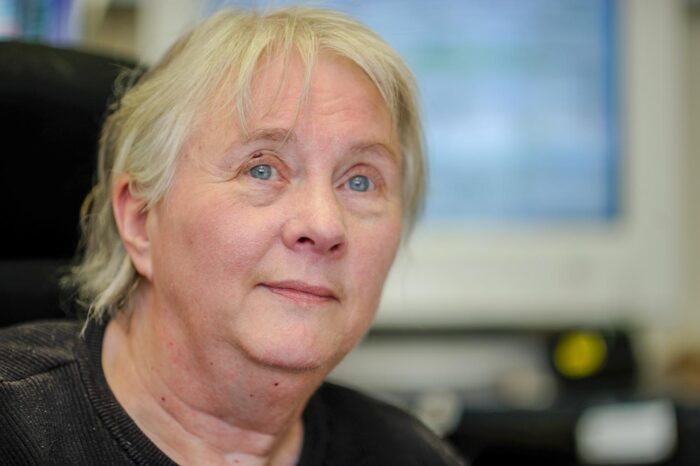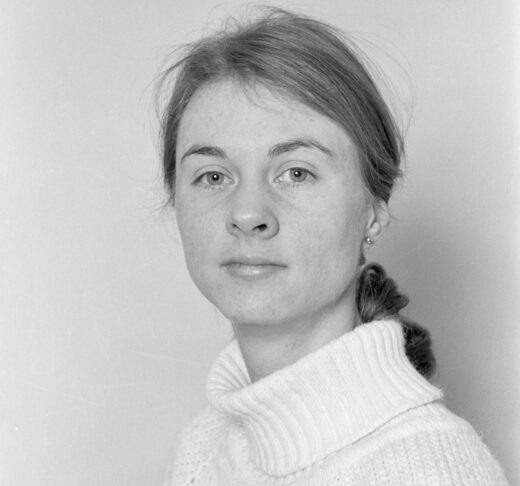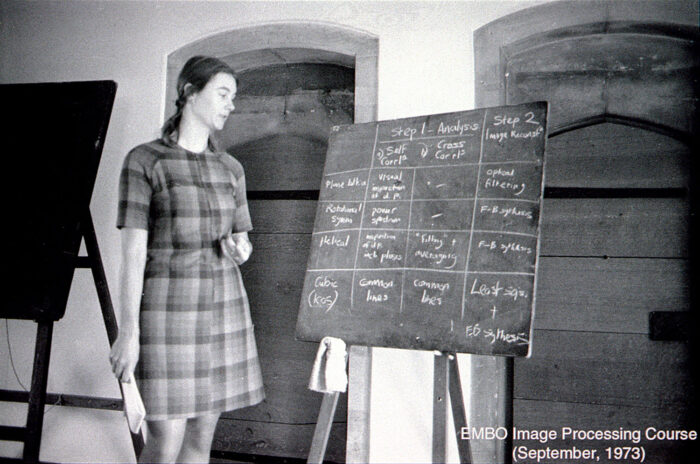
Linda Amos, Group Leader in the LMB’s Structural Studies Division from 1978 to 2009, died on Sunday 21st February 2021. Linda, an excellent electron microscopist, was at the forefront of image analysis and reconstruction, leading and collaborating on numerous projects to identify molecular structures.
Linda was born on the 19th November 1943. She studied physics at the University of Oxford, graduating in 1966, and then began a research career at Berkeley Nuclear Laboratory, UK. There, she worked for the Central Electricity Generating Board, modelling changes in nuclear reactor cores.
In 1968, she joined the LMB. She was recruited initially to write FORTRAN programs for 3-D reconstruction from electron micrographs. Linda continued the work initiated by David DeRosier and Peter Moore on programs for helical particles and with Tony Crowther wrote the first programs for spherical viruses. She also worked with Jan Mellema on the reconstruction of the spherical turnip yellow mosaic virus and with Tony and John Finch on the phages R17 and f2. In 1974, she began working on the structure of flagella microtubules with Aaron Klug and Richard Linck. She also collaborated with Ken Taylor and Hugh Huxley on the binding of myosin crossbridges to muscle thin filaments.

Linda’s interests then began to extend beyond programming and she started to work on links between the structures and functions of macromolecules. In 1971, she became a research student with Aaron Klug and in 1975 was awarded a PhD for ‘Image analysis of some symmetrical macromolecular structures’. In December 1978, Linda was appointed a Programme Leader in the LMB’s Structural Studies Division. Her group focussed on the structure of microtubules, including atomic details of the tubulin molecules from which they are assembled and those which they interact with to produce cell movement. The group’s structural data came primarily from electron microscopy, combined with 3-D image reconstruction and labelling with probes such as specific antibodies or covalently-attached gold particles. The group made major contributions to the study of mechanisms of various members of the kinesin family of motor proteins, in collaboration with Rob Cross, at the Marie Curie Research Institute, Keiko Hirose, at NIAIR, Tsukuba, Japan, and Sharyn Endow, at Duke University, North Carolina, and paved the way for deciphering dynein’s mechanisms.
Through work with her postdoc, and later independent LMB group leader and director, Jan Löwe and his group, Linda made seminal contributions to the discovery of archaeal and bacterial cytoskeletons, demonstrating most importantly that prokaryotes contain clear structural and functional homologues of actin and tubulin.
Linda also collaborated with Maria Spillantini and Enrico Magnani at the Cambridge Centre for Brain Repair and the LMB’s Michel Goedert to study the interaction of tau and dynactin and their binding to microtubules.
Linda was, outwardly, a quiet person but behind this was a steady determination and unquestionable drive and initiative. She was imaginative and brought her ideas, considerable intelligence and good critical judgement to bear on many scientific problems.

In recognition of her contribution to the field, Linda was elected a member of EMBO in 2003. She became a retired worker in 2009, when her group closed, and she continued with her research in the Lab until 2018.
Jan Löwe, LMB Director, commented: “I started as a postdoc with Linda in 1996. I will never forget how Linda very gently made me aware of the first hints of tubulins (and later actins) in bacteria and archaea: casually, printouts of the relevant papers would appear on my keyboard, to be absorbed and acted upon. Over the years, I have been in constant awe of Linda’s sometimes uncanny ability to get things right very early on, for example how Taxol inhibits the only now fully accepted conformational switch in tubulin, to make microtubules stable. Her sincere generosity meant that great things were happening around her. But maybe it also meant that, in combination with her long battle with MS, it contributed to the fact that she did not enjoy the scientific recognition that I would like to suggest she deserved.”
Linda leaves behind two sons and her husband, Brad Amos – and a most impressive legacy in electron microscopy and fundamental molecular aspects of the cytoskeleton, both eukaryotic and prokaryotic.